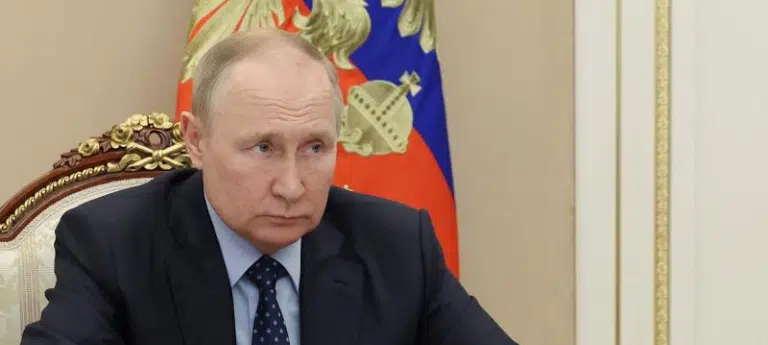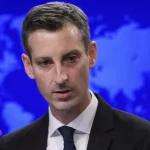KYIV: One of his most explicit public admissions to date that his invasion is not going to go according to plan, Russian President Vladimir Putin stated that the situation in four areas of Ukraine that Moscow unilaterally declared to be part of Russia was proving to be “extremely difficult.”
In his remarks on Tuesday to commemorate Security Services Day in Russia, he also called for an increase in surveillance. They came after a trip to Belarus, a close ally, which stoked suspicions that the country might assist Russia in establishing a new front of invasion against Ukraine, which the Kremlin dismissed.
After Russian drones struck energy targets in a third air strike on power facilities in six days, Kyiv renewed its calls for more weapons.
To combat the “emergence of new threats” from abroad and domestic traitors, Putin instructed the FSB to increase surveillance of Russian society and borders.
The rouble fell to a seven-month low against the dollar on Tuesday as the European Union agreed to cap gas prices, a major Russian export, in response to Western nations’ unprecedented sanctions against Russia.
Putin warned about the difficult situation in regions of Ukraine that Moscow moved to annex in September and ordered the FSB to ensure the “safety” of people living there, a rare admission that the invasion of Ukraine was not going well.
“The circumstance in the Donetsk and Luhansk Individuals’ Republics, in the Kherson and Zaporizhzhia locales, is very troublesome,” Putin said in a video address to security laborers.
A senior official from the US State Department stated on Tuesday that Russia has divergent opinions regarding whether or not to launch a new offensive in Ukraine. He also reiterated Washington’s commitment to supporting Kyiv regardless of the outcome.
Read: Russia Ukraine Conflict Explained
US sees ‘conflicting’ views
The conflict that has been going on for ten months because of Russia’s invasion of Ukraine has turned into the largest in Europe since World War II, resulting in the deaths of tens of thousands, the exodus of millions of people from their homes, and the devastation of entire cities.
However, Russia’s invasion has been severely hampered ever since the summer, when it suffered a series of defeats to a Ukrainian counteroffensive that retook portions of the occupied territory and forced Moscow to partially mobilize 300,000 additional troops.
There are certain individuals within Russia who, in my opinion, would want to launch new offensives in Ukraine. On the condition of anonymity, a State Department official told Washingtonian reporters, “There are others who have real questions about the capacity for Russia to actually do that.”
According to the official, Russia is experiencing “significant” ammunition shortages, which pose a serious problem along the war’s front lines. Additionally, the individuals Moscow has called up to join its combat forces are frequently not “cohesive” units.
The official stated, “There are all sorts of things the Russians are dealing with in terms of having the necessary equipment and ammunition that put some constraints on what they may want to do.”
On Tuesday, President Volodymyr Zelensky paid a visit to the eastern frontline city of Bakhmut, which is currently the epicenter of fighting during Russia’s nearly ten-month invasion of Ukraine.
Editorials: The Critical Role of Organizations in the Russia-Ukraine War
Zelensky visits frontline city
Zelensky met with military officials and presented medals to Ukrainian soldiers who have resisted a ferocious Russian assault on the city for months.
Russia is thought to have launched waves of attacks against Ukrainian positions using mercenaries, prison conscripts, and newly mobilized soldiers to take control of the city.
Large portions of the city and its surroundings have been flattened by the brutal trench warfare and artillery battles in the area of Bakhmut, which was once known for its vast salt mines and vineyards.






